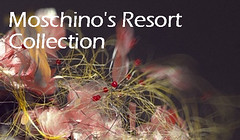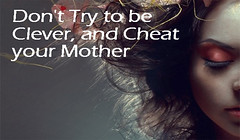Iconada.tv 愛墾 網
文化有根 創意是伴 Bridging Creativity
Highight of English Edition
Comment
-
Comment by 用心涼Coooool on June 19, 2021 at 3:47pm
-
Thomas Hardy (1840–1928)
Freedom
Give me the long, straight road before me,A clear, cold day with a nipping air,
Tall, bare trees to run on beside me,
A heart that is light and free from care.
Then let me go! – I care not whither
My feet may lead, for my spirit shall be
Free as the brook that flows to the river,
Free as the river that flows to the sea.
-
Comment by 用心涼Coooool on June 13, 2021 at 3:02pm
-
NINOI KILING·Industry 4.0 vs creative sector: Disruptive or constructive?
A woman makes batik. The creative sector is set to significantly contribute to the national economy. (Shutterstock / Khairul Effendi)
The term “4.0” has become widely used in the past few years. From government 4.0 to tourism 4.0, this suffix seems to be something that must be attached to every concept and movement to welcome the era of Industry 4.0. But is it used appropriately, or is it actually keeping Indonesia from benefiting even further from unexplored economic potential?Generally, technology or industry aims to increase productivity and reduce the use of human resources, disrupting previous technology providing business opportunities. Through this process start-ups evolve and create solutions to tackle inefficient business problems.
The creative economy is a reaction to the increasing demands for lifestyle and entertainment products. This demands leads to further demand for content, which in their creation and production are deeply related to creative industry. However, traditional creative industry alone is not enough to face the challenge, one also has to understand how the expertise of the business and the business model can be implemented to create a more valuable and creative product.In countries such as Japan, Korea and China, the creative economy is the spearhead of their economic growth. The governments have encouraged many strategies and policies to keep their creative industries developed as soft power or cultural diplomacy, and as the creation of new economic power chains.
In 1974 there occurred an event in Indonesia known as Malapetaka Limabelas Januari (January 15 Havoc) or Malari. At the time, then president Soeharto and several ministers were welcoming Japan's then prime minister Tanaka Kakuei. Students held large-scale demonstrations against foreign capital, especially Japanese, and burned Japanese manufactured goods at several points in the capital. They insisted that they did not want Indonesia to be economically colonized again. In an article written by Husain Abdulsalam entitled “Malari 1974: Protes Mahasiswa yang Ditunggangi Para Jenderal” (Malari 1974: Student Protests Ridden by Generals, 2018), the incident is considered to be "the first major protest after the New Order came to power".
-
Comment by 用心涼Coooool on June 12, 2021 at 10:55am
-
Twenty-four years later, Indonesia's youth gathered at Jakarta's Blok M Square to celebrate Japanese cultural day echinnisai and many even wore traditional Japanese clothing. Japanese cuisine is now also commonplace in the capital, from the very affordable that can be found in roadside stalls to that sold in upmarket shopping malls. Entertainment content originating from Japan, such as Tamagochi, Pokemon, Doraemon and Sailormoon have their own place in the hearts of the Indonesian public. The boost has occurred not only with culture-based products, but other Japanese mass-produced products. According to data from the Association of Indonesian Automotive Industries (Gaikindo), Japanese cars overwhelmingly dominated the car sales market in Indonesia in 2017.Japan started and began to intensify its cultural diplomacy strategy after its defeat in the Second World War. The country was aware that it was important to change its image and improve the nation’s branding in more subtle ways. This creative economic strategy introduced Japanese creative products in Indonesia in the early 80s, namely games (Nintendo) and television shows (Oshin). The national strategy called Cool Japan was designed to increase exports of intellectual property (IP) or cultural content based on manga (pictorial stories or comics), anime (animation), drama, movies, novels, games and toys.
The creative economy involves creative processes and creative products that are loaded with cultural values and using them to influence others. The creative economy now involves political and economic values. At this stage, the creative economy focuses on two main things: the creation of soft power, or what is commonly called the power of cultural diplomacy, and the export of creative content or the export of cultural content.Korea also has its own cultural strategy. In 1994 then president Young-sam Kim gave support and subsidies for local content production. At the time, Hollywood dominated 80 percent of the Korean market, while the local film industry market share dropped to 15.9 percent. Moreover, Kim was also forced to review the total revenue of Hollywood’s film Jurassic Park, which exceeded the revenue of Hyundai automobiles at more than US$1.5 billion. The Korean Ministry of Culture then initiated a cultural industry bureau to manage the cultural sector, which also led and encouraged investors to extend into film and other media.
In the following years, the Korean creative sector showed significant progress. In 1996, Korean mythology-based game Nexus was launched and in 1998 it reached the beta phase in the US. In 1999, Korea's first big-budget film, Shiri, earned $11 million in revenue and surpassed Hollywood's Titanic. In the same year, Korean boy band H.O.T. became the first group to perform abroad in a sold-out concert held in Beijing. This is how the Koreans implemented their cultural strategy, which is also known as Hallyu or the Korean wave.In the case of Indonesia's Industry 4.0, the use of start-ups and creative economy terminology are commonly misused interchangeably, whereas the two have very distinct natures in terms of basic concepts, business model and even purpose.
-
Comment by 用心涼Coooool on June 12, 2021 at 10:27am
-
Industry 4.0, which is reflected in start-ups, intends to solve a problem by creating the solution. The most common questions that start-ups try to answer are what is a problem that it can solve and what kind of solution can a start-up provide? However, the solution offered usually disrupts an inefficient business process and this changes the way businessmen do their business.
Within the creative economy, when an IP creator wants to produce a comic, film, piece of music or game, he or she will not encounter such questions, as the main drive for the industry is not production efficiency but the quality of the content. However, the actual challenge that the creative sector must face is everything related to the balance of trade: how much the creative sector’s exports are worth compared with their imports.
In Indonesia, spinning tops are handmade crafts. They are regarded as traditional toys, selling for no more than Rp 20,000 (less than US$1.50). However, by empowering its creative industry, Japan succeeded in creating comics, animation and toys revolving around spinning tops, so much that they are worth a thousand times more than traditional Indonesian tops.In 2013, Pokémon’s IP collected revenue from Japan fashion and merchandise of more than $890 million. This IP alone produced more than US$21 billion, making the IP the highest-grossing media franchise. The creative sector’s role in the national economy is considered highly important, since the economic value chain formed by the industry will disrupt but enhance other sectors of the creative economy. This is the power of the creative economy, every sector is able to support and empower each other.
Unfortunately, in Indonesia the ambiguity between Industry 4.0 and the creative economy means the latter is seen and viewed in the same context as Industry 4.0, both by the public and even policymakers. This weakens the creative economy even further and puts it at a disadvantage.
Whereas, if we look to other countries as Japan, Korea and China, where they treat their creative sectors with the right understanding and mindset, Indonesia may, too, be able to make the creative economy a featured national program, creating new economic power that can be beneficial for Indonesia. (dev/wng)The writer is a game designer in a local game developer located in Jakarta.
(Jakarta/Tue, October 1, 2019/07:29 pm/Source:https://www.thejakartapost.com)
-
Comment by 用心涼Coooool on May 31, 2021 at 3:23pm
-
Pioneering Psychologist Jerome Bruner
on How to Master the Art of “Effective Surprise”An act that produces effective surprise [is] the hallmark of the creative enterprise.
It is essential, here to distinguish between creativity and originality. In a sentiment that brings to mind Twain’s famous assertion that plagiarism is the seed of creative work, Alexander Graham Bell’s conviction that “our most original compositions are composed exclusively of expressions derived from others,” and Henry Miller’s poetic debunking of the originality illusion, Bruner cautions:
The road to banality is paved with creative intentions. Surprise is not easily defined. It is the unexpected that strikes one with wonder or astonishment. What is curious about effective surprise is that it need not be rare or infrequent or bizarre and is often none of these things. Effective surprises … seem rather to have the quality of obviousness about them when they occur, producing a shock of recognition following which there is no longer astonishment.
He goes on to outline three kinds of effectiveness in surprise.
Predictive effectiveness is “the kind of surprise that yields high predictive value in its wake” — for instance, as in the most elegant formulae of mathematics and physics, which hold that whenever certain conditions are present, a specific outcome is guaranteed to be produced. (All of these 17 equations that changed the world are excellent examples.) Predictive effectiveness doesn’t always come through surprise — it’s often “the slow accretion of knowledge and urge.” And yet, Bruner argues, “the surprise may only come when we look back and see whence we have come” — the very thing Steve Jobs described in his autobiographical account of his own creative journey, in noting that “you can’t connect the dots looking forward; you can only connect them looking backwards.”
Bruner’s second form is formal effectiveness, the kind most frequently encountered in mathematics and logic, and occasionally music. He cites French polymath Henri Poincaré’s famous account of how creativity works, which holds that “sudden illumination” — the mythic Eureka! moment — is the unconscious combinatorial process that reveals “the unsuspected kinship between … facts, long known, but wrongly believed to be strangers to one another.” (see column below)
-
Comment by 用心涼Coooool on May 30, 2021 at 11:05pm
-
Pioneering Psychologist Jerome Bruner on Metaphorical Effectiveness
The third, Bruner notes, is the hardest to describe. Metaphorical effectiveness is also manifested by “connecting domains of experience that were before apart,” but what distinguishes it from the formal kind is that the mechanisms of connectedness come for the realm of art rather than science and logic — the kind of connectedness that Carl Jung described as “visionary,” in contrast to the merely psychological.
(Metaphorical thinking, after all, is at the developmental root of human imagination.)
While we are wired to make sense of the world via categorization, “metaphoric combination leaps beyond systematic placement, explores connections that before were unsuspected.”The unifying mechanism for all three, however, remains what Einstein termed “combinatory play.” Bruner writes:
All of the forms of effective surprise grow out of a combinatorial activity — a placing of things in new perspectives. (Source:https://www.brainpickings.org)
Art by Julia Rothman from ‘Overcoming Creative Block.’ Click here for more.
-
Comment by 用心涼Coooool on May 1, 2021 at 9:05pm
-
YUKARI ART: SHINTARO OHATA
Born in Hiroshima, 1975. Shintaro Ohata is an artist who depicts little things in everyday life like scenes of a movie and captures all sorts of light in his work with a unique touch: convenience stores at night, city roads on rainy day and fast-food shops at dawn etc. His paintings show us ordinary sceneries as dramas. He is also known for his characteristic style; placing sculptures in front of paintings, and shows them as one work, a combination of 2-D and 3-D world.
''afterglow'', 2011, acrylic on canvas
Statement
Shintaro Ohata is an artist who depicts little things in everyday life like scenes of a movie and captures all sorts of light in his work with a unique touch: convenience stores at night, city roads on rainy day and fast-food shops at dawn etc. His paintings show us ordinary sceneries as dramas. He is also known for his characteristic style; placing sculptures in front of paintings, and shows them as one work, a combination of 2-D and 3-D world. He says that it all started from when he wondered “I could bring the atmosphere or dynamism of my paintings with a more different way if I place sculptures in front of paintings”. Many viewers tend to assume that there is a light source set into his work itself because of the strong expression of lights in his sculpture. His further steps have been noticed as he has been featured by lots of media from overseas, including a cultural magazine from the USA that featured him on their front cover and a long interview.
「水族館」/ ''Aquarium'', 2010, panting, polystyrene based sculpture
-
Comment by 用心涼Coooool on May 1, 2021 at 9:03pm
-
「ひこうき雲」部分/ ''vapor trail''detail, 2007, panting, polystyrene based sculpture sculpture
 ''loop'', 2010, panting, polystyrene based sculpture
''loop'', 2010, panting, polystyrene based sculpture「さんぽ道」/ ''SANPOMICHI -hanging around-'', 2007, acrylic on canvas
「線香花火」部分/ detail''Sparklers'', 2010, panting, polystyrene based sculpture
(Posted by No Agency on January 23, 2013 )
More Pictures @ https://www.pinterest.com
-
Comment by 用心涼Coooool on April 29, 2021 at 12:52pm
-
UMBRELLA: IMAGE of a CITY'S STYLE(Photo Courtesy: Eric Chavet *top; Katerina Vorvi *bottom)
According to the champion and researcher of cultural creative industries in Malaysia, Dr Tan Beng Huat, who is also a fellow member of the renowned Malaysian Institute of Management (MIM), the “character” of a city is defined by its awareness, attitude, style and philosophy it believes in.
It seems no issue in understanding the awareness, attitude or philosophy of a city.
For instance, in Berlin, every Berliner follows traffic light; green you go, orange and red you stop, whether it is 3 in the morning or in the afternoon, for men or vehicles.
Your car just has to stop right in front of red light, even when there is no car coming from the other side in midnight.
-
Comment by 用心涼Coooool on April 29, 2021 at 12:51pm
-
(Photo Courtesy: Samuel kreuzer *top; Olah Laszlo Tibor *middle/bottom)
It is obvious, all Germans “aware” or “appreciate” how important it is to be law-abiding. It is part of their disciplines, which often translate into the reliable quality of their manufacture goods such as cars, machineries and electronics.
But, what is style? To be precise, the style of a city? and how does it shape the “character” of a place?
To me, it is simple. Style is defined by the mental image we hold for a city. When I travel to a place, there are usually a few things I would first observe.
- ‹ Previous
- 1
- 2
- 3
- Next ›
愛墾網 是文化創意人的窩;自2009年7月以來,一直在挺文化創意人和他們的創作、珍藏。As home to the cultural creative community, iconada.tv supports creators since July, 2009.
Latest Activity
Videos
-
鬼王大士爷
Added by engelbert@angku张文杰 0 Comments 82 Promotions
Blog Posts
陳明發:文創的文化要素
Posted by 馬來西亞微電影實驗室 Micro Movie Lab on February 21, 2021 at 11:00pm 7 Comments 70 Promotions
《愛懇網》16週年(2009-2025)誠意禮贈
Posted by 馬來西亞微電影實驗室 Micro Movie Lab on February 18, 2021 at 5:30pm 18 Comments 78 Promotions
柳敬亭說書
Posted by Host Studio on May 14, 2017 at 4:30pm 11 Comments 55 Promotions
Good and Fond Memories - Dedicated to all those born in 1940's, 1950's & 1960's
Posted by 用心涼Coooool on July 7, 2012 at 6:30pm 39 Comments 59 Promotions
愛墾雲端藝廊: 戀戀·文物館
Posted by 就是冷門 on August 24, 2013 at 10:00pm 85 Comments 86 Promotions
愛墾網特寫·新冠肺炎:人文景觀
Posted by 罗刹蜃楼 on April 6, 2020 at 11:30pm 40 Comments 69 Promotions
陳明發《2019新冠肺炎 觀察紀事》
Posted by 葉子正绿 on April 2, 2020 at 5:00pm 77 Comments 75 Promotions
《愛墾雲端藝廊》~~味蕾主題館
Posted by Rajang 左岸 on August 26, 2013 at 8:30am 29 Comments 67 Promotions
社會企業的定義
Posted by 來自沙巴的沙邦 on November 4, 2015 at 7:30pm 3 Comments 82 Promotions
Creative Industries Policy in Malaysia
Posted by Dokusō-tekina aidea on January 5, 2016 at 9:00pm 35 Comments 79 Promotions
© 2025 Created by 馬來西亞微電影實驗室 Micro Movie Lab.
Powered by
![]()






You need to be a member of Iconada.tv 愛墾 網 to add comments!
Join Iconada.tv 愛墾 網